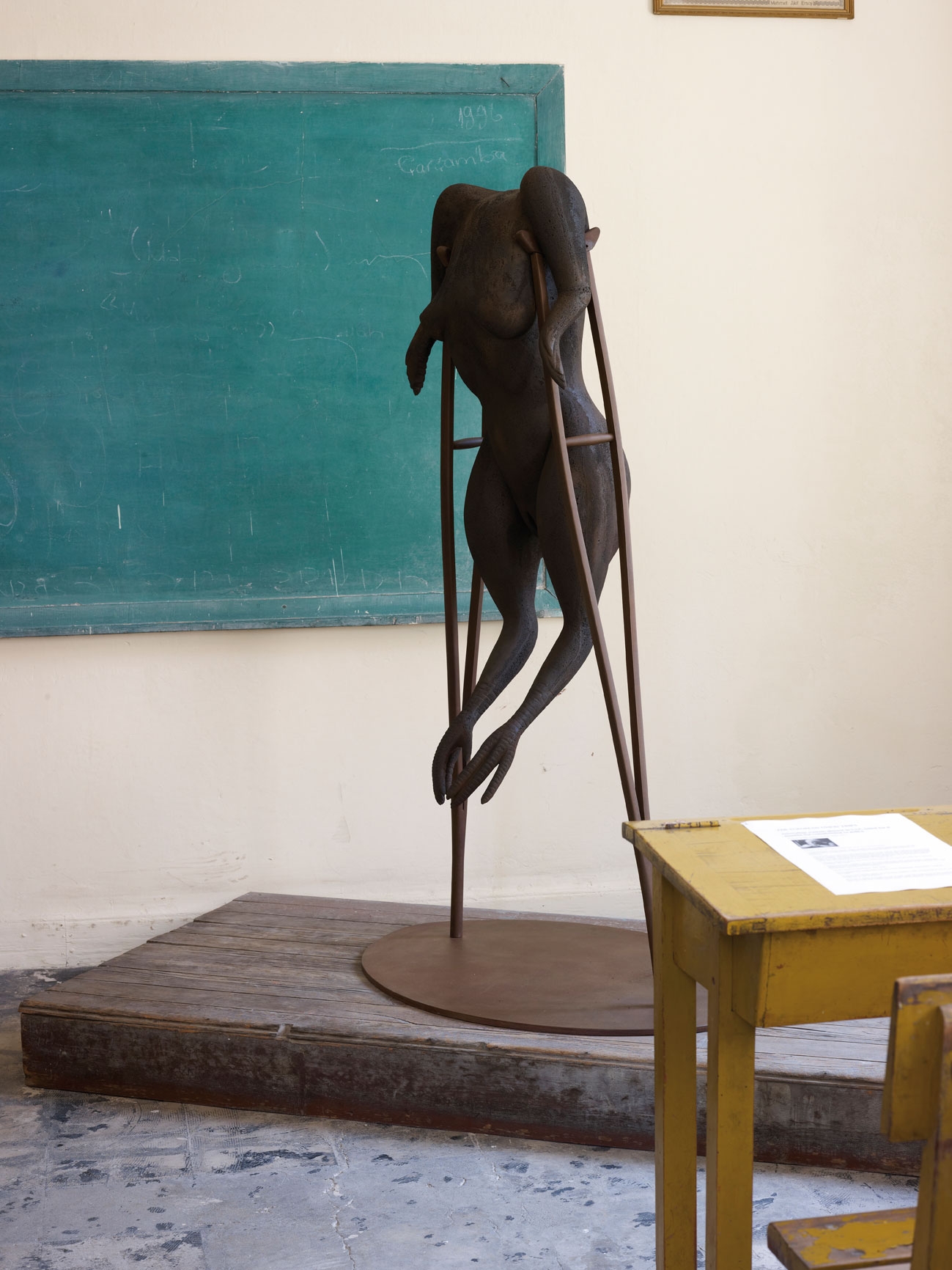Timed to coincide with the Istanbul Biennial, Kalliopi Lemos’s offsite exhibition sounds, when described, like it shouldn’t work at all. Housed in a girls-only lyceum closed in 1988 due to Turkey’s declining Greek population and now preserved yet decaying, the show comprises three main elements. There are seven steel sculptural hybrids of woman and animal, typically maimed; sound installations of schoolchildren’s speech and scratchy schoolroom ambience; and, laid like classwork on graffiti-marked wooden school desks, printouts of news reports detailing the diversely brutal treatment of women worldwide. Tabulated accordingly, the London-based Greek artist’s I Am I, Between Worlds and Between Shadows reads as dangerously didactic, and beamed in from another artworld, where denatured Expressionism lives forever.
Yet Lemos’s sculptures – a formal shift for an artist who has previously favoured politicised readymades such as accumulations of immigrants’ battered boats (Round Voyage, 2007–) – are often genuinely grotesque and of intriguingly hazy status, and they reposition the environment even as its historical aspects threaten to overpower them. In one schoolroom, Hen on Crutches (all works 2013), a large half-fowl, half-woman figure, plucked and beheaded, long birdy legs dangling, faces the desks like a cross between a victim-exemplar and a pedagogue; it then fades into the background as one reads reports on school sex abuse in China and India, a paedophile ring in Oxford, abuse in Chinese labour camps. Such material, in this abandoned building, is irrepressibly potent and serves to make the sculpture a nightmarish periphery: a semiabstract commentary on, or condensation of, hideous news. The same goes for the queasily eight-breasted Hanging Hare in another classroom, while in a poky science room a six-year-old’s voice emerges hesitantly from a speaker, reading from Little Red Riding Hood, and elsewhere children keenly recite, “Now I know my ABCs. Next time won’t you sing with me?” Such warped-kindergarten menace works on Boards of Canada records and in horror movies, and it works here too.
What Lemos is articulating, it’s clear as the stats accumulate, is a horror movie: human trafficking in Vietnam, domestic abuse in Istanbul, a Saudi child sold for a PlayStation and a car, Congolese soldiers raping, voodoo prostitution in Nigeria where the women are branded with irons, and more. Lemos, though, seemingly wants to tackle all strata of female debilitation. Goat, the most abstracted sculpture, finds the titular animal broken in half and attached to a right-angled pole: the upper body erupts from its top while a pair of breasts is attached further down. If goats on mountainsides leap fleetly from point to point, this one has been broken by trying to cover too much ground – the analogy, Lemos has said, is with women being expected to be mothers and careerists, Madonnas and whores – and lost its coherence in the process. Hen with Two Faces, like a three-dimensional rendering of one of Goya’s sardonic Caprichos (1797–8), has a proud, childish, beaky face and, embedded in its feathered rear, the world-weary one that time and experience will bring to it.
These sculptures need the decrepit aesthetics of the school, which not only summarises a specific example of victimhood (how the Greek community in Turkey has been treated) but brims with happenstance gifts – eg, photographs of the final few students pinned to a door, unmoved in a quarter-century – and the textual and sonic addenda Lemos lays out. In memory, for all that they made this viewer rethink certain reflex preconceptions about anthropomorphic sculpture, the figures become blurred and sentinellike: shadowy presences in Lemos’s vociferous gesamtkunstwerk of a haunted schoolhouse.
This article was first published in the December 2013 issue.
